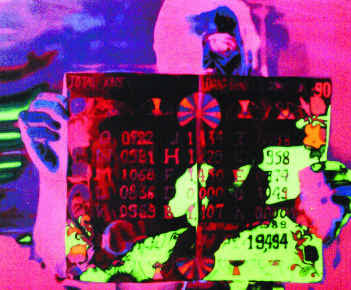The Economic Times
21 May 2009
Ashoke Nag
KOLKATA: Leading auctioneer Sotheby’s is coming up with an Indian art auction in London in mid-June which will bring to the market an assortment of works by leading Modern and Contemporary Indianartists as well as rare Indian Miniatures. A major portion of the works are armed with provenance, having been part of private collections. The 86 lots are expected to bring in the region of £1.2 million.
"Jogen Chowdhury’s ink and pastel composition Day Dreaming graces the cover of the sale catalogue. Dating from 1979, Day Dreaming is a continuation of a series of works that Chowdhury produced between 1968 and 1976, entitled Reminiscences of a Dream.
The artist, who trained in both Kolkata and Paris, is best known for his ink works. This work, one of the largest of its type by Chowdhury to come to the market, was never offered at auction before and is estimated at £80,000-100,000," director of Indian art at Sotheby’s, Zara Porter-Hill, told ET in an e-mail from London.
An Untitled painting by Manjit Bawa is another highlight and is expected to fetch £70,000-100,000. Bawa’s work questions the dynamics of the relationship between humans and the animal world and the icons and myths of both. His distinctive and bold use of colour is rooted in his training as a silk-screen painter and his study of Rajput and Pahari miniature paintings.
A group of works by the noted Bengal painter Nandalal Bose have come to the market with strong provenance, having been part of the artist’s own private collection. "The four ink and wash works -- entitled Untitled (Ocean Dune), Untitled (Where Cranes Nest), Untitled (Hills Ablaze) and Untitled (Two Shal Trees) were executed in the late 1950s and early 1960s and are full of intense beauty and capture the trajectory of modern India’s cultural development. Each of the four works carries an estimate of £10,000-15,000," Ms Porter-Hill said.
Among the miniatures on offer is a group of three Mughal illustrations coming from the famed Ehrenfeld Collection. The three miniatures are estimated at £8,000-12,000, £10,000-15,000 and £12,000-18,000. The sale will also offer a selection of works by Contemporary Indian artists such as Rashid Rana and Abir Karmakar and photographic works by Pablo Bartholomew and Atul Bhalla.





























